What's New In Robotics This Week - Nov 10

Posted on Nov 10, 2017 7:00 AM. 11 min read time
Manufacturing & Cobot Roundup
Experts from the UK, Sweden, Italy and Germany are busy developing the next generation of automated guided vehicles designed for use in warehouses.
The four-year, EU-funded ILIAD (Intra-Logistics with Integrated Automatic Deployment) project aims to create bots that can work safely alongside humans while supporting tasks from packing and palletizing through transporting goods.
Via Gears of Biz:
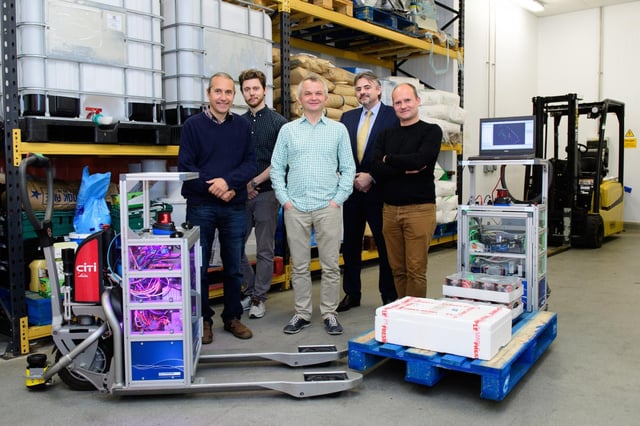
Caption: The ILIAD team.
Professor Tom Duckett is Director of the Lincoln Centre for Autonomous Systems at University of Lincoln and a Principal Investigator on the ILIAD project: “Our goal is to deliver an economical, flexible robotic solution that can be easily deployed and integrated into current warehouse facilities and which guarantees efficient and safe operation in environments shared with humans."
The project will push the state-of-the-art in human-robot interaction, overcoming persistent barriers to greater adoption of automation in logistics operations in many industries, starting with the food sector.
Collaborative welding using a cobot by Universal Robots (from FABTECH 2017)...
Automation is now a matter of survival in a number of industries, and that's created an opening for startups offering" automation stopgaps", says ZDNet's Greg Nichols in a story about the new customer relationship between Baltimore-based Ready Robotics and power tool manufacturer Stanley Black & Decker:
 Caption: Stanley Black & Decker is using versatile cobots and industrial robots to build on legacy automation. (Via ZDNet.)
Caption: Stanley Black & Decker is using versatile cobots and industrial robots to build on legacy automation. (Via ZDNet.)
The problem is that adding automation post hoc to industrial operations is difficult and pricey. Deployment has typically required weeks, in addition to a lot of upfront capital.
That's led to the rise of a growing number of robotics startups making task-agnostic platforms to automate jobs common to various industrial processes.
A YuMi cobot showed off its wire cutting, stripping, handling and sorting skills in an MCR500 manufacturing cell...
Driven by brisk demand from manufacturers of electronics products, such as smartphones and computers, Yaskawa is set to increase Chinese industrial robot output by 25% and will focus on smaller machines for making electronics, according to a report in Nikkei Asian Review:
With a Jiangsu Province plant to expand in the second half of 2018, the major Japanese factory automation equipment manufacturer will raise its monthly output in China to 1,500 units from the current 1,200.
Security robots collaborate too...
The representative body for British manufacturing (EEF) has called on Philip Hammond, the UK's Chancellor of the Exchequer, to consider an "increase in the rates of capital allowances and large company R&D tax credits, as well as ways to get supply chains working together on the robotisation of the shopfloor," according to a report in The Times:
“We have got to start being more creative about boosting investment rather just relying on corporation tax cuts,” said Lee Hopley, EEF’s chief economist. “If we are going to be sitting on our hands for the next two years we are going to store up problems.” EEF also called for a fund to boost industrial efficiency investments.
A robot bartender served drinks at Motek 2017...
A new STG14.3m research centre focused on robotics for the offshore industry was announced in the UK this week. The Offshore Robotics for Certification of Assets (ORCA) will be led by Heriot-Watt University with with project partners the universities of Oxford and Liverpool and Imperial College London, OE Digital reported:
The ORCA Hub will develop robotics and AI (artificial intelligence) technologies for use in extreme and unpredictable environments. The Hub will create robot-assisted asset inspection and maintenance technologies that are capable of making autonomous and semi-autonomous decisions and interventions across aerial, topside and marine domains.
'How many robots does it take to fill a grocery order?' Bloomberg asked...
It once took online grocer Ocado two hours to put together a box of 50 food items. Now machines can do it in five minutes.
The size of the cobot market in China will exceed 1.3 billion yuan (US$196 million) by 2020, according to the 'Blue Paper of the Cobots Industry for 2017', China Daily reported: "[...] sales of collaborative robots, or cobots, will swell more than four times in four years to 12,000 units in China by 2020, with small and medium-sized enterprises driving the growth."
Siddhartha Srinivasa spoke about the physics of robots in cluttered enviornments 'with and around people'...
IDC Insights released 'IDC FutureScape: Worldwide Robotics 2018 Predictions,' which looks at the drivers that "are likely to shape the development of robotics in the planning horizon of 2018 through 2021." Key predictions include:
By 2019, robot adoption will have increased by one-third, with 60% of G2000 high-tech manufacturers having deployed industrial robots in manufacturing operations.
By 2021, 30% of G2000 manufacturers will have deployed cyber-physical robotic systems, resulting in a 10-20% improvement in productivity.
In other news, a robot tax would suppress growth, according to a new report, Alexandra Leonards in Logistics Manager asked 'Is packaging keeping up with the rest of the logistics process when it comes to technology?', and Octopuz and SolidCAM
have announced plans to fully integrate the two companies’ products.
'Embodied Intelligence' Launches
Embodied Intelligence, a startup specializing in complex algorithms that allow machines to learn tasks on their own, launched this week.
Backed by US$7 million in funding from the Silicon Valley venture capital firm Amplify Partners and other investors, the startup has developed a hybrid system of imitation and reinforcement learning.
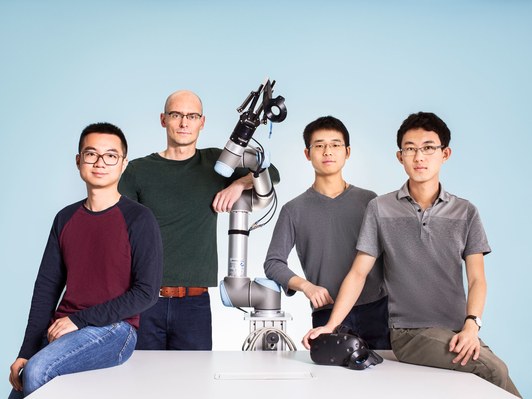
Caption: The Embodied Intelligence Founding Team, (L-R) Peter Chen (CEO), Pieter Abbeel (President and Chief Scientist), Rocky Duan (CTO), Tianhao Zhang (Research Scientist).
Via Wired:
Using a VR headset and controllers, a human can teleoperate the robot to do a certain task. This creates a more natural kinetic connection between the operator and robot, as machine learning algorithms—trained to match what the human does—guide the robot's motions. Then the reinforcement learning kicks in, refining the robot’s movements with trial and error until it's even better at its job than the human taught it to be.
Meet the MantaDroid
Roboticists from the National University of Singapore’s Department of Mechanical Engineering have created a bio-inspired, autonomous underwater vehicle based on the manta ray.
Dubbed the 'MantaDroid,' the bot can swim at a speed of twice its body length per second and operate for up to 10 hours.
New Atlas reports:
Along with potentially having a longer range than conventional propeller-powered AUVs, MantaDroid should also be quieter, allowing for less disruption to marine life when being used for research missions. Additionally, its flat, wide body can accommodate a range of sensors or other payloads.
The National University of Singapore has more.
Meanwhile, in Switzerland, experts have created a 7-inch long AUV that can infiltrate swarms of zebrafish and communicate with them.
Sophia the Robot Talks Ireland, Saudi Citizenship
In an interview with The Irish Times this week, humanoid robot Sophia described Ireland as a 'magical place full of rain and crazy people.’
On a personal level, as a Dubliner currently visiting Ireland, I am astounded by the accuracy of Sophia's insights. The singularity can't be far away.
The robot, which has been doing the media rounds since it was awarded citizenshp of Saudi Arabia a couple of weeks ago, also spoke with Business Insider.
The magic and craziness of Dublin won't prevent me from returning next week with more news from the world of robotics. Until then, please enjoy these videos and links!
AI systems may learn better and faster if they can ‘sleep’ (Silicon Angle)
Supersonic deposition blows away layer-by-layer approach to 3D printed metal (The Engineer)
Iranian researchers build versatile robotic arm (MEHR News Agency)
A pair of philosophers probe the ethical implications of designing social robots (Science)
Three inventors win gold at China industry fair (Global Times)
Smart soft robotics for stroke rehabilitation (Robohub)
Humanoid robot market to double by 2023, industrial robotics to hit $72B (TechRepublic)
Should Children Form Emotional Bonds With Robots? (The Atlantic)
Letting robots kill without human supervision could save lives (New Scientist)
Future robots won’t resemble humans – we’re too inefficient (The University of Manchester)


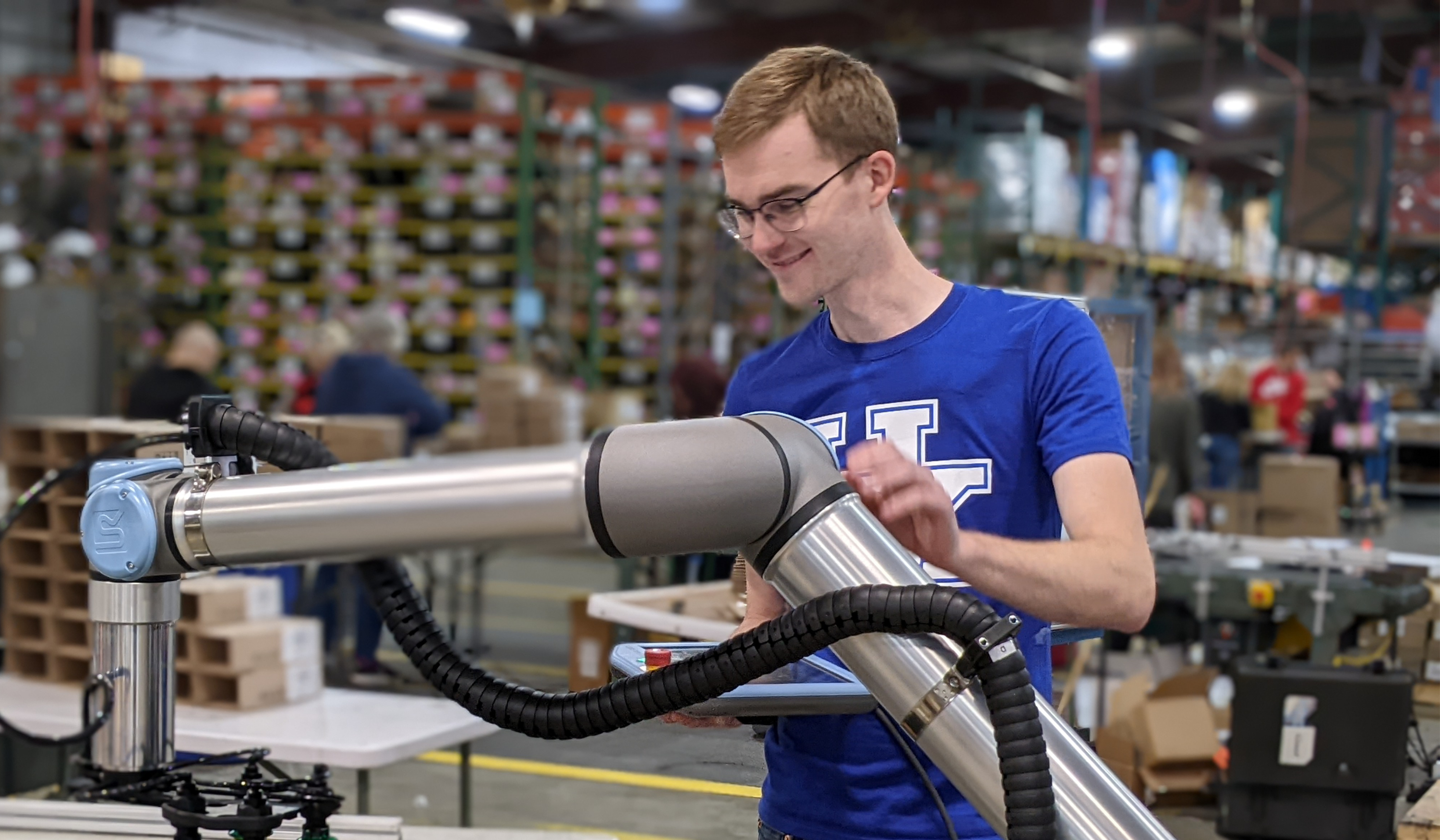

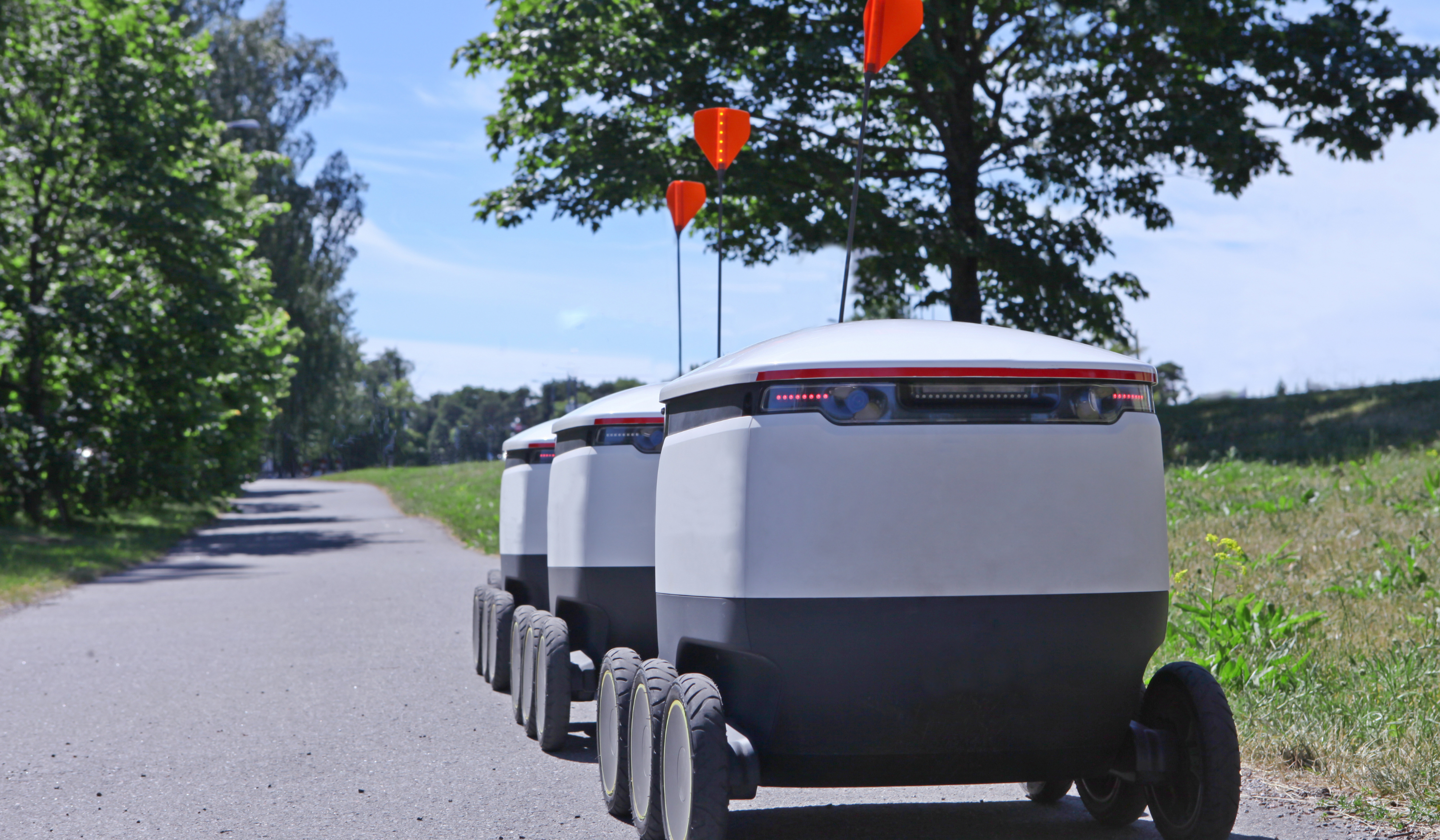
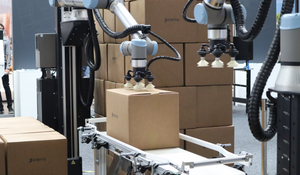

Leave a comment